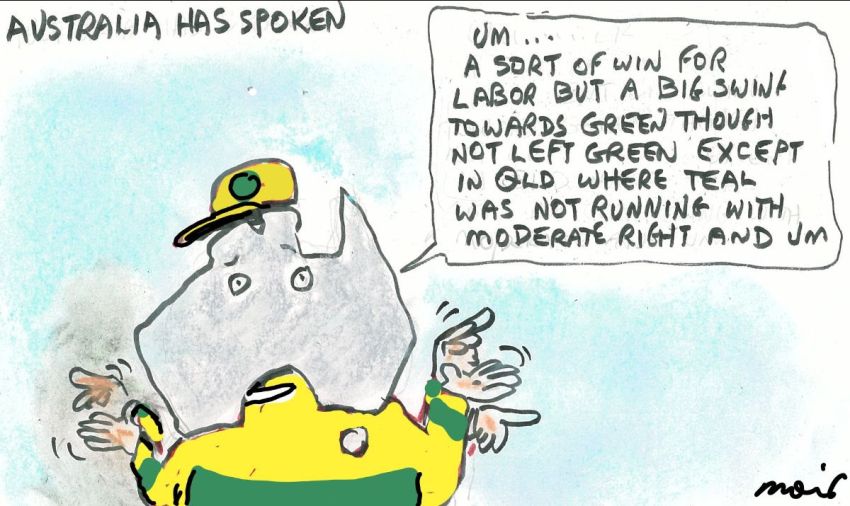
In recent times, it has seemed that big political phenomena that sweep the United States end up coming to Australia a couple of years later.
Only last September, when large far right-led crowds attacked the Melbourne office of the militant Construction, Forestry, Mining and Energy Union, and stayed on the streets for a couple more days after, it appeared that an aggressive, Donald Trump-like movement might be growing here.
The protests were focused on opposition to COVID-19 mandates and frustration with months of stay-at-home pandemic orders. They were replicated, with less right-wing violence but still with thousands participating, in all major cities.
The former Scott Morrison Coalition government slyly egged on these “Freedom” protests and tried to channel the movement against state Labor governments in Victoria (tagging Labor Premier Dan Andrews “Dictator Dan”), Western Australia and Queensland.
The right-wing “Freedom movement” continued in the streets over subsequent months, culminating in the “Convoy to Canberra” in February. This was an attempt to copy-cat the Canadian movement that had started.
Convoy to Canberra mobilised several thousand for one day but then deteriorated into a small rump of “anti-vaxxers”, conspiracy theory nuts and aspiring far-right politicians.
This movement was funded by sections of the billionaire class who mostly tried to stay in the shadows — except for Clive Palmer. In the previous federal election this crooked mining billionaire from Queensland spent $60 million campaigning, through his United Australia Party (UAP), primarily against Labor.
This election, Palmer boasted that he would spend $100 million on the UAP and the country was spammed with unsolicited text messages spouting brazen lies and giant yellow billboards proclaiming “Freedom, freedom, freedom”. This time the UAP attacked Liberals, Labor and the Greens.
Palmer also unsuccessfully took the WA government to court over its COVID-19 pandemic measures that locked the state off from the rest of the country for months.
This election we were confronted at the polling booths with yellow T-shirted UAP campaigners ranting about their pet anti-vaxxer conspiracy theories. In the previous federal election, the UAP booth campaigners were mostly indifferent and poorly-paid casual day workers. The new UAP booth crew probably scared voters off.
The UAP ran in every seat across the country, but only won 4.12% of the vote despite Palmer’s $100 million donation and the propaganda blitz. The older right-populist party, Pauline Hanson’s One Nation, managed 4.82% and it looks like Hanson may be fighting Palmer for the last Senate seat in Queensland.
The right-wing “Freedom movement” was already fizzling in the streets before the election. This can be partly attributed to the easing of pandemic regulations, but also because COVID-19 vaccination has been taken up by the overwhelming majority and Australia has one of the highest rates of COVID-19 in the world.
But it is the rise of another movement that holds the real promise to prevent right-populism from rising to US levels of support.
The May 21 election result was shaped powerfully by the relatively quiet rise of the movement demanding real climate action. While the numbers at climate protests during the pandemic have been modest, a widespread awareness of the climate emergency has been pushed along by the catastrophic floods and before that the bushfire emergency of 2019–2020.
This lived experience of the climate emergency has brought about a convergence between the climate and other social crises, including inequality, housing, misogyny, cost-of-living pressures and insecure employment.
The tangible expression of this has been the parliamentary gains made largely in the big cities by Greens and the so-called “teal independents” in wealthier suburbs in Liberal heartland seats.
But, in coming elections, the urgent need for climate action could spread rapidly into regional and rural Australia, as more former coal miners realise that there is literally no future in fossil fuels.
Building the climate movement and combining it with the movements for jobs and social justice will help speed up the change and put a nail in the coffin of the right-wing populist movement.
You can help speed up this process by becoming a Green Left supporter today and making a donation to our Fighting Fund.